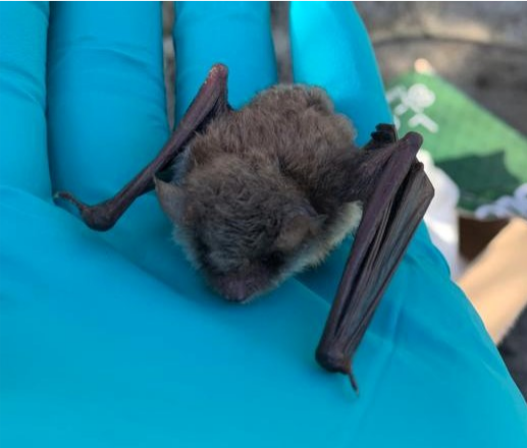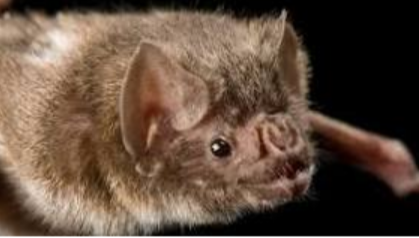
Last year we attended more call outs which turned out to be bat populations than we attended wasp nest treatments. The callouts we received were for possible mouse infestations, the majority of which were in lofts, with clients reporting scratching noises throughout the night in ceiling/ loft areas. This prompted us to do some deeper delving into the world of these cute little mammals and to pass on to you some of the well known, and perhaps not so well known facts about our furry friends.
Bat Facts
Did you know that there are eighteen species of bat in Britain and all of them are protected under the Wildlife and Countryside Act?
They are the only mammals capable of controlled flight - and their aerobatic skills are as impressive as a Red Arrow airplane! British bats eat insects and nothing else. So for farmers and gardeners needing to reduce insect numbers, they are a valuable natural pest management method, as some insects can cause damage to valuable crops and flowers.
Bats have their own exclusive Order which is known as Chiroptera (meaning hand wing). They have been separated from the other insect eaters because they can fly.
Although bats have reasonable eyesight they catch their food (flying insects) by using a remarkable form of 'radar'! As the bat flies through the air it emits a series of ultrasonic squeaks (about 12 - 15 per second). These high-pitched sounds are usually out of range of human hearing, although some lower frequency calls can definitely be heard by the human ear. The sound waves from each squeaking call are projected out in front of the flying bat. As these sound waves come into contact with objects along the flight line they bounce echoes back to the bat's on board receiving equipment - so allowing the bat to avoid obstacles or to home in on insect prey.
Our bats are divided into two distinct groups. The twelve species of earlet bats have a long ear post, or tragus, which is what they use to receive their echo signals. The other two species are known as horseshoe bats. The greater and lesser horseshoe bats have a strange horseshoe-shaped growth on the nose. As a horseshoe bat flies it produces ultrasonic squeaks through its nose. Keeping its head still, it moves the parts of its nose to change the direction of the sounds. At the same time the bat waggles its ears backwards and forwards, (up to 60 times a second!), so it can catch and process the echoes.
This little one was rescued from a pond. We ensured that it was fully recovered before being released. This is a Natterer’s bat which can grow up to a length of 4-5cms with a wingspan of 24.5-30cm, weighing on average between 7-12g with a lifespan of up to 20 years!

Super Important Fact
All bat species and their roosts are protected by both UK and international law and should not be disturbed. This means you may be committing a criminal offence if you deliberately take, injure or kill a wild bat or intentionally or recklessly disturb a bat in its roost or deliberately disturb a group of bats.
Activities that can harm bats include:
renovating, converting or demolishing a building
cutting down or removing branches from a mature tree
repairing or replacing a roof
repointing brickwork
insulating or converting a loft
installing lighting in a roost, or outside if it lights up the entrance to the roost
removing ‘commuting habitats’ like hedgerows, watercourses or woodland
changing or removing bats’ foraging areas
using insecticides or treating timber
So how do you know if you have a bat or a mouse?
Well, we look at the droppings! A bat will leave dry & crumbly ones, which will break down to dust between your fingers. Mice droppings are more solid and don’t dissipate so quickly or finely – however we strongly urge you NOT to go handling any poop without using thick gloves.
If you find a dead bat:
do not directly handle the bat if possible
if you have to touch the bat follow the Bat Conservation Trust guidance and use thick gloves
follow the Bat Conservation Trust guidance on what to do with the dead bat at: https://www.bats.org.uk/our-work/national-bat-helpline
What about those urban myths?
“They carry dangerous diseases” Bats (although very helpful to us in terms of insect control) can be dangerous because they carry rabies. But a lesser known danger, and one that is not as easy to avoid, is histoplasmosis. Histoplasmosis is a disease associated with the droppings of bats (sometimes called guano). The disease primarily affects the lungs and can be life threatening, particularly to people who have a weakened immune system. It’s transmitted when a person breathes in spores from fungus that grow on bird and bat droppings.
Humans can catch rabies from a bat, although this is very unusual as the disease is very rare among bats in Great Britain. However, if you have been bitten or scratched by a bat, or exposed to bat saliva or nervous tissue in any other way, you MUST:
wash the wound or contact area with soap and water
disinfect the wound
contact a doctor immediately who will decide whether you need treatment
“Vampire bats drink human blood”

During the darkest part of the night, common vampire bats come out to hunt. Sleeping
cattle and horses are their usual victims, but they have been known to feed on people as
well. The bats drink their victim's blood for about 30 minutes.
Don’t worry though they’re only found in central and south America!
So if you think you may have bats in your belfry, it may be a wise plan to call in the professionals who would be happy to complete a site survey and diagnose the species of your unpaying guest. That way you’ll get a safe solution which secures the protection of these gravity defying aeronauts and stops you from breaking any laws.

Comments